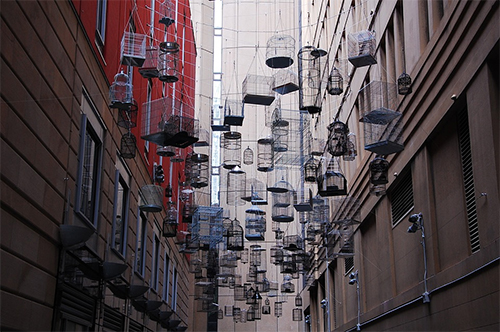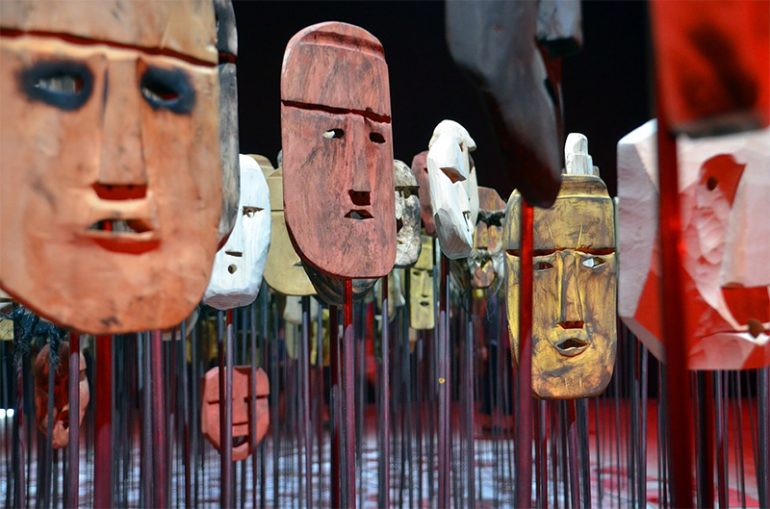What is Installation Art?
Installation art involves the formation or installation of items in a particular space, like inside a warehouse or room. This new genre in contemporary art is widely-practiced among a developing number of postmodernist artists. The final layout of the space and objects is considered as the artwork.
Since an installation typically allows people to wander inside the configured room and interact with several installed materials, it provides the viewer with a whole new way to experience the artwork compared to customary painting or traditional sculpture that is usually seen from one reference point.
Moreover, an installation may engross the viewer’s different senses, such as vision, smell, sound, and touch. Due to its adaptability and three-dimensionality, it is merged with various developments in the field of computer art, like software developments in film projection and video, as well as methods utilized in avant-garde dance and theater. Other influences include interior and architectural design.
Classes of Installation Art
Installation art ranges from basic to complex. It comes in many forms, including web-based, computer-based, gallery-based, and electronic-based. Depending on the theme and concept of the artist, installation art is boundless.
Any type of object or media can be used, such as man-made or natural objects, sculpture, painting, as well as contemporary media like animation, films, live performance art, photography, audio, and sound. Most installations are strictly presented indoors, though there are also public arts – displayed in public buildings or community spaces.

History
Founded in the 1970s, Installation Art is related to Conceptual Art, which can be linked to artists like Marcel Duchamp and this intriguing urinal known as the Fountain, which is a modernist ready-made. Other influences are the avant-garde Dada exhibitions projected in Cologne and Berlin; the masterpiece of sculptor and collage artist Kurt Schwitters known as ‘Merzbau’ assemblage that stuff an entire building; the Spatial Environments created by the sculptor and painter Lucio Fontana, together with his White Manifesto that highlights his theories regarding Spatialism; the Proun Room displayed at the Berlin Railway Station in the year 1923, which is developed by El Lissitzky; and the “4-33” silent musical composition of John Cage.
Moreover, the writings and assemblages of Allan Kaprow, an American avant-garde artist that is known for his book, entitled ‘Assemblage, Environments and Happenings’, which greatly influenced the field of installation art.
Popular Installation Arts
Some installations are custom-made for specific space. Others like the still-life line drawings of Michael Craig Martin that depict odds and ends of materials created from adhesive tape can be installed anywhere. Some travel as a portion of touring exhibitions such as the kinetic light environments designed by the Groupe Recherche d’Art Visuel that toured all over Europe; the Earth Room designed by Walter De Maria that went to America before it was permanently situated in New York; and the room stuffed with sump oil, displayed from a footbridge by the British Sculptor Richard Wilson that was projected in London and the Royal Scottish Academy.
Photo Attribution:
1st and Featured image from https://pixabay.com/photos/faces-masks-heads-wood-carved-art-2521553/
2nd image from https://pixabay.com/photos/sydney-birdcage-installation-art-458071/
